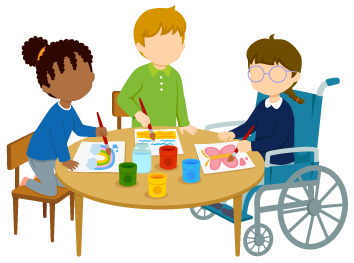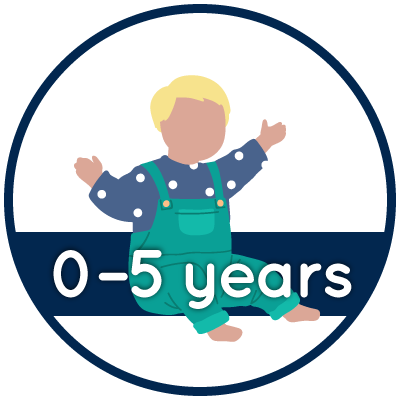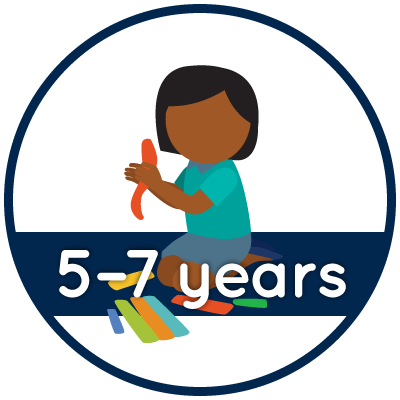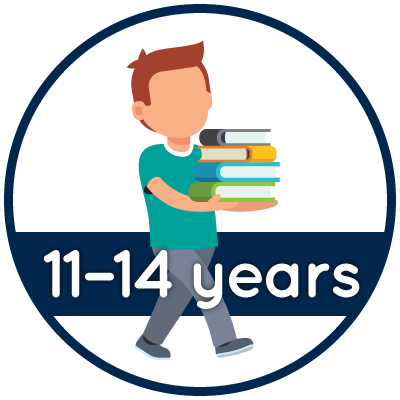Practical support for identifying and meeting need
Communication and interaction
What are speech and language needs?
Almost everything we do involves communicating – being able to make our needs known, expressing our likes and dislikes, interacting with others and building relationships are life skills we cannot afford to be without.
Communicating is also a key skill which underpins learning:
- Being able to understand instructions and classroom talk – and participate as an active learner by asking questions, giving views and discussing ideas.
- Being able to think things through, using language to reason, extend conceptual understanding and be creative.
- Learning to read and write: literacy skills are built on oral language skills – it is much harder to learn to write a word that you have never heard or can’t say yourself.
- Being able to manage your feelings by naming them and talking about them.
Acquiring speech and language skills is a complex process which goes remarkably smoothly for most children – but when individuals find this challenging it can have potential implications for lots of areas of their lives, particularly school.
Getting their needs correctly identified and the right support in place at the earliest possible opportunity can make a huge difference to their learning, relationships and wellbeing.
Don’t Get Me Wrong from The Communication Trust looks at speech, language and communication needs in children and young people. It is full of useful information and advice which you can use in your setting:
Ages and stages – speech and language skills
Children develop speech and language skills at different rates but there are stages of development that most children pass through as they mature. There are lots of factors that affect this, including environmental. Research shows that children from disadvantaged backgrounds often do not have the same exposure to language rich environments as children from more advantaged households and this can affect their language levels and subsequent attainment at school.
In this section you can find a summary of what to expect from children and young people aged 2–16 yrs and how speech and language typically develops. If you have a concern about a child’s speech and language skills it is helpful to consider where a child or young person has got to in their developmental journey – to see if their speech and language skills seem to fit with their abilities overall.
When a child or young person is taking longer than average to acquire skills in all areas of their development, then it is likely that their speech and language skills will also be delayed. These children are likely to make progress as they learn and mature without the need for any specialist support. Children with a very uneven profile – with speech and language well below their other skills – are more likely to need targeted or specialist support.
Click on the icons below to see the development stages:
You can download the developmental checklist below to print out and use as a checklist with an individual child.
Different types of speech and language needs
Speech
Struggling to pronounce particular sounds or use sounds in the correct places in words. Others may not always understand the child’s talking.
Understanding language
Children may struggle to understand verbal instructions and/or to understand and remember information given in spoken form. This may be particularly noticeable with more abstract language e.g. before/after, more complex concepts, or non-literal language and inference.
Using spoken language
Child does not use age-appropriate grammar and sentence length when talking. They may miss out small grammatical words (e.g. a, the, is) or not use tenses correctly, or may mix up the order of their words. Some children may use grammatical sentences but the content of what they say is muddled.
Stammering
Talking that is not fluent e.g. repeating sounds, syllables or words, prolonging sounds or becoming completely stuck on a sound/word. Some children may mask this by avoiding words or changing what they are going to say. There may be some non-verbal associated signs e.g. tapping fingers, avoiding eye contact, facial tension.
Vocabulary
Children may struggle to learn and retain new words, or recall known words when they need to use them.
Anxiety around talking
A child may find it challenging to speak in certain situations or to certain people, despite having the ability to speak effectively in other environments. This is considered to be related to underlying anxiety rather than an active choice not to talk.
English as an additional language (EAL)
Children who do not understand or use English at the same level as their peers, despite having age-appropriate skills in another language. If a child also displays communication needs in their first language, this would be considered a primary speech and language difficulty, rather than an EAL need.
Using alternative methods of communication
Some children may use alternative communication methods to enhance or replace spoken language. Examples include using symbols, signing, and hi-tech communication aids.
Social communication
Some children have difficulties using language to interact effectively. Read more about social communication >
Voice
Any persistent noticeable change in the way a child’s voice sounds e.g. hoarse, croaky, losing their voice regularly.
How to spot children and young people with speech and language needs in the school setting
Speech and language needs may not be immediately obvious, particularly if a child or young person has learnt their own ways of coping some of which may mask their underlying needs. If you see any of the following, it is worth considering whether speech and language needs are the root cause.
If a child is struggling to understand classroom talk they may:
- switch off and disengage
- get distracted or distract others
- feel confused about what to do – so not get on with their work or not do what’s been asked
- copy others and rely on their knowledge of school routines and teacher expectations to ‘fit in’ and do the right thing
If a child is struggling to communicate themselves they may:
- opt out of contributing to class or group discussions
- appear muddled in what they say, forgetting or mis-using words
- start to say something but then get stuck
Practical ideas and strategies
Anxiety around talking (reluctant speakers)
If you are concerned about a child or young person who has anxiety around talking...
- Do not put any pressure on the child to talk. Explain that you understand that it is difficult for them, and they can talk when they are ready.
- Identify one adult to form a special bond with the child, gradually building rapport and confidence. Try a little bit of regular special time, playing or doing activities without demanding speech. Encourage cooperative play with comments like, “Why don’t we try giving the animals a ride.” or “I wonder which one would look nice here.”
- Don’t insist on eye-contact initially.
- Register: let children choose between answering or arm-raising. You could make a non-verbal game out of the registration to encourage interaction e.g. children nod or wave etc.
- Avoid the dread of turn-taking in circle time activities by asking who would like to say something, rather than waiting for each child to have a go.
- If children do not naturally speak out in circle time/story time, help them contribute by doing something rather than talking. If they sit close to you they can hold up a picture or give out cards, turn the page etc.
- Pair the child with other quiet, shy children to see if friendships can develop.
- Any form of non-verbal communication from the child should be accepted and encouraged, as this helps to build the positive relationships, which are so vital in overcoming this problem.
- Include more activities where the children talk, move or sing together rather than one at a time. Play games involving interaction between pairs or the group, e.g. rolling balls, rowing boats, ring games and rhymes.
- Let children point to their preferred choice of item/activity if it’s easier for them.
- Give extra smiles and attention when children try anything new. Do things with the children, rather than taking over and doing things for them.
- Make chatty or admiring comments, rather than asking questions e.g. Rather than ‘What have you drawn?’ you could say, “What a lovely picture, I love the colours you have chosen!”
- Every achievement by the child should be praised and rewarded, regardless of any talking, in order to help enhance self-esteem.
- Encourage self-expression through creative, imaginative and artistic activities.
- Remove all pressures to speak- remember cajoling, gentle persuasion, bribes and reprimands all amount to pressure.
- Encourage home/school connections e.g. artwork taken home or something from home brought to school and shown off.
- When changing classes, the hand over needs to be carefully planned, ideally with the new teacher coming into nursery or old class. The child and parent could visit the class when it is empty so that the child may feel able to speak and hear their own voice there.
- As time goes by make sure the child is not getting extra attention for silence and becoming too comfortable with the non-verbal responses. Continue to give the opportunity for verbal communication, if not with a staff member then with peers e.g. reading to them or telling them what they have drawn.
Activities to try
(Only if the child is willing and enjoying it otherwise it could increase their anxiety)
- Try non-verbal activities which require expelling air and using the mouth, e.g. blowing bubbles, blowing ping-pong balls with a straw, breathing on a mirror, blowing party blowers or whistles, mouth popping, tongue clicking, teeth chattering, drinking through long curly straws.
- Make noises for toy vehicles and animals in play situations or as sound effects for a story.
- Introduce play with puppets, because the child may speak through the puppet, especially from behind a screen; masks may also be helpful.
- Use musical instruments for fun and to allow the child to communicate through the instrument; have a ‘conversation‘ between two instruments; make a ‘band’ and march around the room, taking turns to be leaders.
- Encourage participation in noisy games and rhymes with predictable language, e.g. “What’s the time Mr Wolf?”
- Use a ‘Kazoo’ which requires the child to hum in order to make a sound.
- Give the child a job or responsibility like getting them to run an errand, perhaps with another child at first, such as taking the register to the office, in order to increase their confidence and independence.
- Parents could write their news in a home/school book or, and only if the child wants to, they could bring in some video footage of themselves for the class to watch or their assigned worker.
When to seek more help
- Strategies are not resulting in any change
- The child is noticeably distressed or becoming more withdrawn
Speech sounds
If you are concerned about a child or young person who can’t produce some speech sounds or is difficult to understand...
- Be sensitive, the child may be frustrated or embarrassed about his/her speech. Listen to what the child is trying to say rather than how he/she is saying it.
- Don’t ask the child to repeat words that he/she gets wrong just repeat them back to him/her with praise (e.g. Child: “tat”, Adult: “Yes, well done, it’s a cat”).
- Encourage the child to look at your face when you are talking to them.
- Slow down your own speech slightly to encourage the child to use a slower rate of speech. This is more effective and less frustrating than asking your child to slow down.
- Be honest with the child. It’s better to admit that you can’t understand than to pretend that you do. Encourage them to use other strategies to enable them to communicate effectively e.g. pointing, drawing /writing, actions and gestures, allowing a friend to interpret for them.
- Try to establish a context to help you to understand the child e.g. having a home school diary so you know what the child has done at the weekend or things that the child has a special interest in and is likely to want to talk about e.g. family members, pets, hobbies/activities, favourite films/tv programmes etc
When to seek more help
- Child is more than 6 months delayed on the speech sound screen >
- Child’s speech does not meet age expectations as set out in the speech sound checklist >
- Child does not make any progress despite strategies being in place
Understanding and using vocabulary
If you are concerned about an OLDER student who has a narrow range of vocabulary...
- Give opportunities to pre learn and over-learn key vocabulary for topics in different subjects. Use a range of techniques including visual strategies such as drawing, images, writing, mind maps, word books.
- Ensure that the more abstract “cross-curricular” words used in school are explicitly taught, as this has the biggest impact on successfully understanding instructions in class. These are words such as “introduce, estimate, measure, evaluate, modify, discuss, compile, observe, notice, believe, infer, consequently, anticipation, doubt”.
- Check understanding of key words by asking the student to explain what the word means.
- Encourage students to be word detectives and spot words that they don’t understand, or have heard before but are not sure the meaning of. Give them strategies to help them work out the meanings of words, including:
- Using clues and parts of words to help work out a meaning e.g. “less” on the end of a word changes it to the opposite….harmless, careless, restless.
- Looking for connections between the target word and related words, such as those which look similar, sound similar, and are in similar contexts/categories.
- Relate new words to words that the child already knows, and familiar contexts. E.g. “examine means to look closely at something. You might examine a bug with a magnifying glass. The doctor might examine your finger if you had hurt it”.
If you are concerned about a YOUNGER pupil who has a narrow range of vocabulary...
- Pre-learn and over-learn key vocabulary and all core curriculum vocabulary e.g. topic words, literacy and maths/numeracy words and vocabulary in individual reading books.
- Use key rings with key words, flashcards, scrap books/word books, word mats, books, real objects and central display materials, actions and gestures to reinforce key words.
- Keep a note of words that a child does not know and reinforce these words in lots of different situations. This may include everyday classroom words such as ‘(pencil) sharpener’, ‘ruler’, as well as new topic words. Remember to think about verbs as well as nouns/concrete objects.
- Relate new words to words that the child already knows, and familiar contexts. E.g. “examine means to look closely at something. You might examine a bug with a magnifying glass. The doctor might examine your finger if you had hurt it”.
- Encourage older children to be “word detectives” and spot words that they don’t understand, or have heard before but are not sure the meaning of.
- Praise the student for asking or checking what a word means.
- Show the child how to use clues and parts of words to help work out a meaning e.g. “less” on the end of a word changes it to the opposite….harmless, careless, restless.
- For younger children, comment and narrate on their play and label objects in their environment e.g. “you’re pouring the tea in the cup and now you’re going to give it to Max.. Max is drinking the tea… yum!”
If you are concerned about a child or young person who appears to have word finding difficulties...
- Pre-learn and over-learn key vocabulary and all core curriculum vocabulary e.g. topic words, literacy and maths/numeracy words and vocabulary in individual reading books.
- Use key rings with key words, flashcards, scrap books/word books, word mats, books, real objects and central display materials, actions and gestures to reinforce key words.
- It might help the child to retrieve and use a word if you give them an initial sound or syllable e.g. pig (it starts with ‘p’), by giving them a meaning clue (it’s an animal, it lives on the farm, it’s got a curly tail and a snout, it says oink oink) or by giving them a choice of word (e.g. is it a pig or a cow?).
- Keep a note of words that a child does not know and reinforce these words in lots of different situations. This may include everyday classroom words such as ‘(pencil) sharpener’, ‘ruler’, as well as new topic words. Remember to think about verbs as well as nouns/concrete objects.
- In order to maximize the chance of learning a word securely, it is useful to reinforce the following things by talking through each word with the child or by setting up and using a word book to record this information:
- How to say it (practice saying the word at least x3)
- How many syllables? (e.g. shar-pen-er)
- What’s the first sound? (NB: first sound rather than first letter)
- What category/group is it in? (e.g. transport, materials, feelings)
- What does it mean in context? (use a simple definition)
- How does it fit into a sentence?
- What does the new word look like written down?
- How do I write it?
When to seek more help
- Child is not able to recall or retain vocabulary despite targeted interventions.
- Child is aware of frequently struggling to recall known words in conversation.
Understanding classroom talk
If you are concerned about a child or young person’s ability to follow instructions (understanding of language):
- Reduce background noise and distractions where ever possible
- Keep your sentences short and simple. Break down longer instructions/sentences into several shorter steps.
- Make sure that you get the child’s attention before you begin to speak (say their name, touch their arm, remind them that they need to listen)
- Don’t continue to speak when the child’s attention has been lost.
- Allow time for the child to process what you have said. Pause between key elements in the message, and give them time to respond.
- Visual support is important to help support verbal comprehension. Use visual clues (e.g. actions, gestures, signs, photographs, pictures) to emphasise key words and support your spoken language. For older children, consider concept maps, mind maps or vocabulary books.
- Slow down the rate of your talking.
- Speak about things in the here and now
- Give instructions in a logical sequence and use words that make the sequence clear (e.g. first, next, last).
- Avoid sudden changes of topic. Make sure that a change of topic is clearly defined and explained.
- Avoid asking the child to listen and do at the same time. Listen first then do the activity.
- Encourage the child to ask for help when they don’t understand
When to seek more help
- Strategies are not resulting in any change
- Child’s understanding of language appears significantly below peers, or child’s identified level of learning.
Stammering
If you are concerned about a child or young person who stammers...
- In general, aim to avoid making the child who stammers feel different from his/her peers. Maintain normal eye contact when the child is stammering.
- Resist the pressure to say a word or complete a sentence for the child, even when the child seems to be struggling.
- Ask the child’s parents about his/her level of awareness of the stammer and whether the child has a particular way of referring to it. If the child is aware of having “trouble talking”, you can ask the child what s/he want you to do about the it in the school situation. If they are not aware or bothered by the stammer you do not need to ask them this.
- Help the child to feel there’s no hurry to get the words out or finish his/her turn to talk. You can achieve this by:
- Using a slow relaxed rate of speech
- Using more pausing
- Trying to talk at the same speed as the child
- Be aware of your body language in order to make sure you are not giving a non-verbal signal for the child to hurry or that you appear anxious or upset by the stammer.
- It is very important NOT to offer suggestions to the child about what to do to help when s/he is stammering, such as “Slow down”, “Start again” or “Take a deep breath”. In the long term, these suggestions do not help the child and may adversely affect the child’s pattern of stammering.
- Help the child keep his/her language simple. You can achieve this by:
- Keeping your own language simple
- Using simple questions
- Using choices: do you think it is x or y
- In conversation, reduce the number of questions you ask – instead, make a comment about a subject and then give the child the opportunity to respond.
- Develop the class’s awareness of the rules of turn-taking – this will help all the children.
When to seek more help
- Child displays awareness of, and is concerned by, their lack of fluency
- Child is actively asking for help with fluency
- Stammering is significantly impacting on their participation in everyday activities, or on their education e.g. oral presentations/exams
- Advice should be sought if a new lack of fluency persists for more than 6 months.
Expressive language skills
If you are concerned about an OLDER student’s ability to explain, describe and tell stories...
- Show the student that you are listening: give them plenty of time to respond and don’t be tempted to answer for them.
- Ask the student what they think would help with explaining, describing and telling stories. Encourage them to tell you when they are finding it difficult to explain.
- In conversations, pause and let the student start the talk. Avoid asking lots of questions one after another. Speak in a slightly slower way and allow the student 5-10 seconds to take in what you say.
- Encourage the student to take their time to think about what they want to say.
- Encourage the student to think of another way of saying something or showing what they mean. Visual supports such as mime, drawing, images, photos and objects can all help.
- Encourage the student to plan what to say, especially in preparation for speaking in a group.
- Explain the specific meanings of joining words and model how to use them in longer sentences when you talk and/or read together. Words like ‘because’, ‘until’, ‘if’ are abstract words that need practise.
- Ask the student to teach you/explain how to do something that is fun or helps to solve a problem eg: using an App, playing a game. You can record their ideas on a phone or write down their instructions to help with checking back.
- Practise retelling events from the last week. Model a structure by retelling events from your week, and then ask the student to retell their own. Use words like ‘first’, ‘next’, ‘then’ to make the sequence clear. You can also practise this by retelling a section of a favourite film or programme.
- Use a visual plan to help structure the telling of a story, such as a ‘narrative story planner’ or similar.
- Model clear sentence structure to the student. E.g. if the student says “When I feel hungry at school, go get crisps” or “if I had went over to gym, I wouldn’t been late” the adult should model a clear sentence with all the correct grammar. Do not ask the student to repeat your sentence, but praise clear structures when they are used.
- Expansion – the adult reinforces and expands on what the child has said. The aim is for the child to experience language at a slightly higher level than they have used (e.g. child: ‘daddy’s car’, adult: ‘that’s right, daddy’s gone in the car’/ child: ‘we went to the park’, adult: ‘yes, we went to the park yesterday’).
- Ask open questions to encourage the child to provide you with more information e.g. “I wonder what you did at the weekend” vs “did you go to nanan’s at the weekend?”.
- Provide opportunities for the child to use language in different ways during the day (not just answering questions), including describing, asking questions, giving instructions, requesting and commenting.
- Help the child to sequence events and ideas into words:
- Start by describing current sequences of activities, using words such as first, next, then, last. Use everyday activities and model descriptions in lots of situations.
- Then extend this by describing and re-telling events that have already happened. Describe a favourite film/story, look through photos from a day trip or holiday, or use a wall or phone calendar to recall and retell what has happened during the week.
If you are concerned about a child or young person’s formulation of sentences or their use of grammar...
- Show the child that you are listening: give them plenty of time to respond and don’t be tempted to answer for them.
- If a child gets stuck, try prompting them – for example, offer a choice words or phrase (e.g. is it an apple or an orange). This gives him/her the benefit of hearing the vocabulary or sentence structure he/she needs to use without directly imitating it. Make sure that you don’t always put the target word or phrase in the same position in the choice.
- Model clear sentence structure to the child. E.g. if the child says “me drink”, the adult should say “I want a drink”. Do not ask the child to repeat your sentence, but praise him if he does (“Good talking”).
- Expansion – the adult reinforces and expands on what the child has said. The aim is for the child to experience language at a slightly higher level than they have used (e.g. child: ‘daddy’s car’, adult: ‘that’s right, daddy’s gone in the car’/ child: ‘we went to the park’, adult: ‘yes, we went to the park yesterday’).
- Ask open questions to encourage the child to provide you with more information e.g. “I wonder what you did at the weekend” vs “did you go to nanan’s at the weekend?”.
- Provide opportunities for the child to use language in different ways during the day (not just answering questions), including describing, asking questions, giving instructions, requesting and commenting.
- Help the child to sequence events and ideas into words:
- Start by describing current sequences of activities, using words such as first, next, then, last. Use everyday activities and model descriptions in lots of situations.
- Then extend this by describing and re-telling events that have already happened. Describe a favourite film/story, look through photos from a day trip or holiday, or use a wall or phone calendar to recall and retell what has happened during the week.
When to seek more help
- Child does not make any progress despite strategies being in place
- Gap between child and their peers is widening
Child learning English as an additional language
Children and young people learning English as an additional language...
Generally, children who have age appropriate language skills in their first language should have no problems in eventually speaking English well. If the child’s parents feel that the child is also struggling in their home language compared to siblings and peers, there may be an underlying language need requiring assessment and intervention from the Speech and Language therapy service.
Development of English
Learning English as an additional language needs sufficient exposure. Current evidence shows that:
- Answering basic questions (e.g. what did you have for dinner? Do you have brothers and sisters? What did you do at the weekend?) takes 2 years of quality exposure to English. Therefore a child coming into school in Foundation stage maybe proficient in this simple type of everyday language by the end of year 1.
- “Language for thinking” (e.g. being able to make inferences, explain using complex language, verbal reasoning etc) can take up to 7 years of quality exposure. This means that a child may not be competent in these types of language tasks until the end of primary school, if they enter in Foundation Stage.
The best way to boost the language learning of a child who has EAL is to focus on vocabulary learning.
Vocabulary development
Key points in supporting vocabulary development in children with EAL:
- Ideally, staff in school who speak the child’s first language should teach new curriculum words in the home language first, before introducing them in English.
- When looking at curriculum words you may need to first focus on words that are needed by the child to back fill gaps in English vocabulary. For instance, if your topic was volcanoes you might need to backfill with mountain, Earth, flow, boiling etc
- The Word Aware vocabulary approach looks at which words to target when learning new vocabulary. When considering a topic or subject, separate key words into:
- Anchor words: words which you think the child has firm understanding of
- Goldilocks words: “add on” key words that the child needs for new topic/subject – words which will stretch the child but are “not too hard and not too easy”.
- Step on words: very specific words that you feel are less essential or a little too hard and not foundation words that the child needs to learn. You may decide that, for a child with EAL, you will not target these words.
Key additional points
- Always encourage parents to continue to speak their home language at home. If a child has a strong first language with age appropriate grammar and vocabulary, this will give a basis for the child to pin their learning of English on.
- If the child has speech sound difficulties in both languages, they will need to practice words in both languages, as evidence shows that improvements in one language do not necessarily generalize to the other. Ask parents to make up word lists of words containing the child’s target sound in their home language.
When to seek more help
- If you suspect (or family report) there are needs in both English and first language.
- NB if a child is struggling in only English as an additional language, they do not need to be referred to Speech and Language Therapy
Specialist – additional support for children and young people with an ongoing and significant identified need
Learning environment
- Targeted programmes delivered on a daily basis.
- Specific curriculum approaches designed to meet individual needs.
- Significant use of communication aids, e.g. technology, signs and symbols or signing to aid communication and create a Total Communication environment.
- Staff who have a full understanding of the child’s individual needs.
- Bespoke adaptation of the classroom environment to meet the child’s specific assessed needs.
Access to the curriculum
- A highly differentiated / modified curriculum which takes into account the individual’s communication needs.
- Possible use of alternative methods of communication and interaction.
- Direct advice from a Speech and Language Therapist/Educational Psychologist.
- Additional adult support may be required in the classroom.
- Technology may be used to aid communication
Support available from external agencies
Speech and Language Therapists will provide an appropriate level of support and input for each child’s needs, which may include:
- Regular review in school.
- Programmes of intervention for school (and family) to carry out with the child.
- Clear, identified and achievable targets.
- Skilling up staff who are working closely with the child.
Some children may be supported using an “episodes of care” approach, where children are set targets and then discharged until school feel that they need updated advice, or that the child has met the target.
Other professionals coming in to school could also support with advice at a targeted level e.g. Learning Support Service, Autism Communication Team, Educational Psychology service, Hearing Impairment and Visual Impairment teams.











